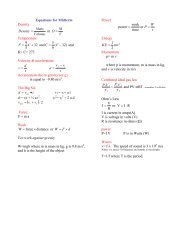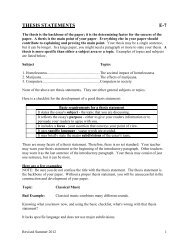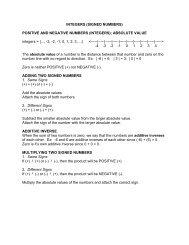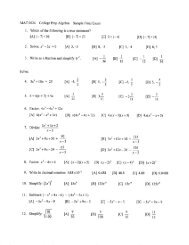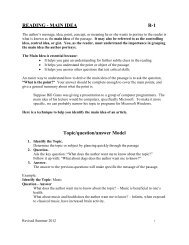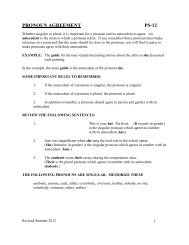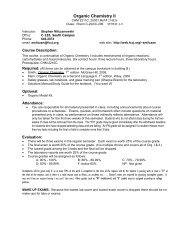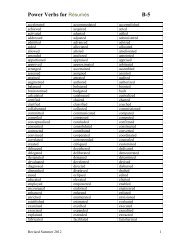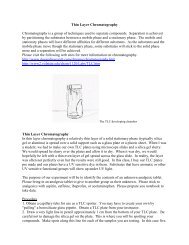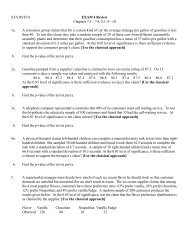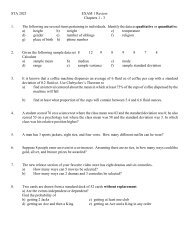Saponification: The preparation of Soap
Saponification: The preparation of Soap
Saponification: The preparation of Soap
- No tags were found...
Create successful ePaper yourself
Turn your PDF publications into a flip-book with our unique Google optimized e-Paper software.
To 1 mL portions <strong>of</strong> your potassium soap solution in three separate test tubes, add 1mL <strong>of</strong> each <strong>of</strong> the following solutions: Calcium Chloride (0.1%) Magnesium Chloride(0.1%), and Iron(II) Chloride (0.1%). Stir the solutions. Do precipitates form?Repeat this test with a synthetic detergent such as Tide or Dreft. Prepare asolution <strong>of</strong> the detergent by dissolving 0.5 g <strong>of</strong> detergent in 50 mL <strong>of</strong> distilled water.Now mix equal portions (1 mL <strong>of</strong> each) <strong>of</strong> your potassium soap and tap water. Doesa precipitate form? Repeat with the detergent solution.Post-Lab questions:1. What is the difference between a detergent and a soap?2. Why do detergents typically not form soap scum?3. What is a micelle?4. Indicate the polarity differences that occur in a soap molecule? (Draw a picture.)5. What is a saturated fatty acid?6. What is an unsaturated fatty acid? (Are double bonds cis or trans?)7. List the percentages and draw the major fatty acids that make up Butter? Oliveoil?8. Draw a mechanism for the saponification. (Just one acid will be fine.)



